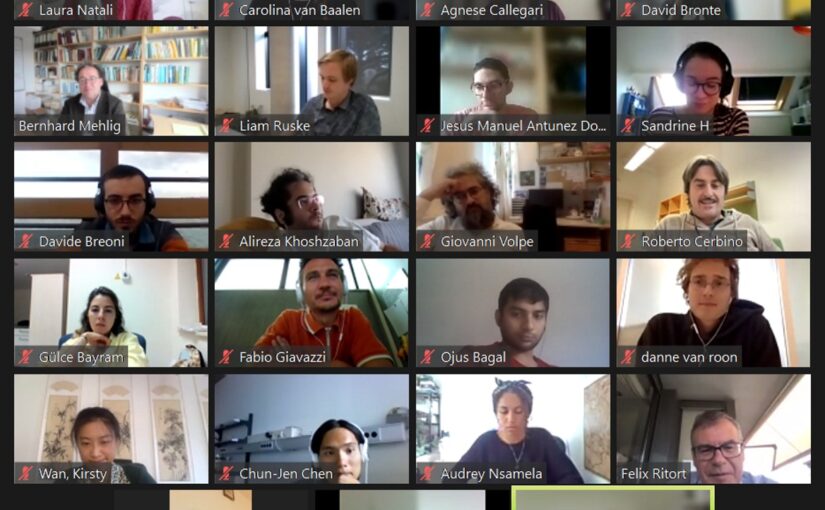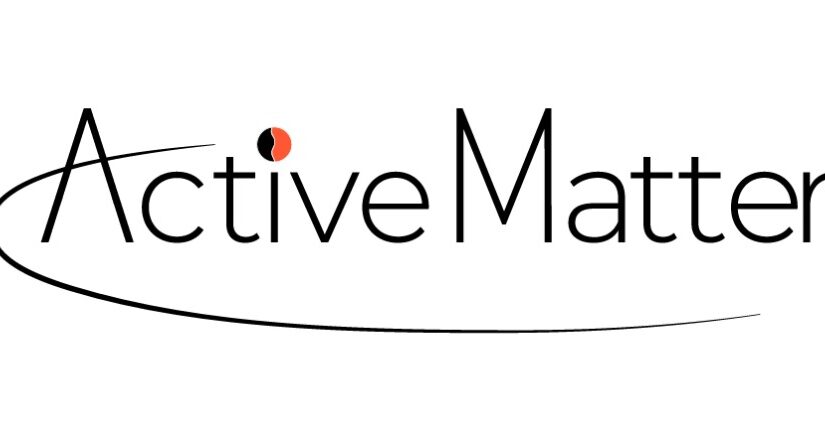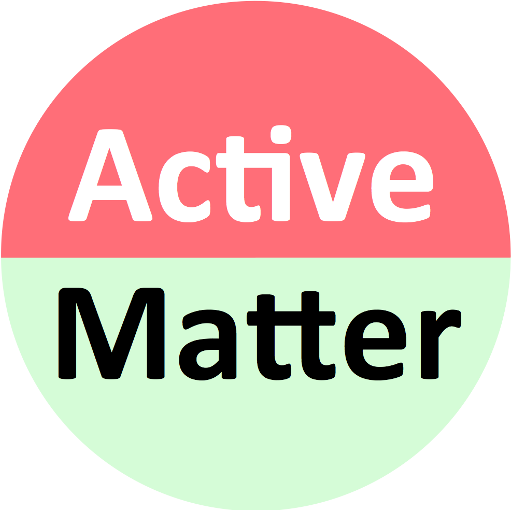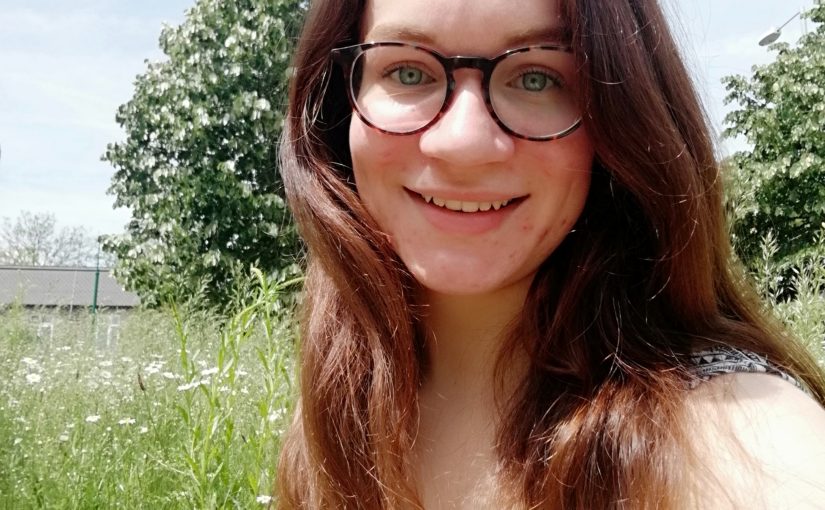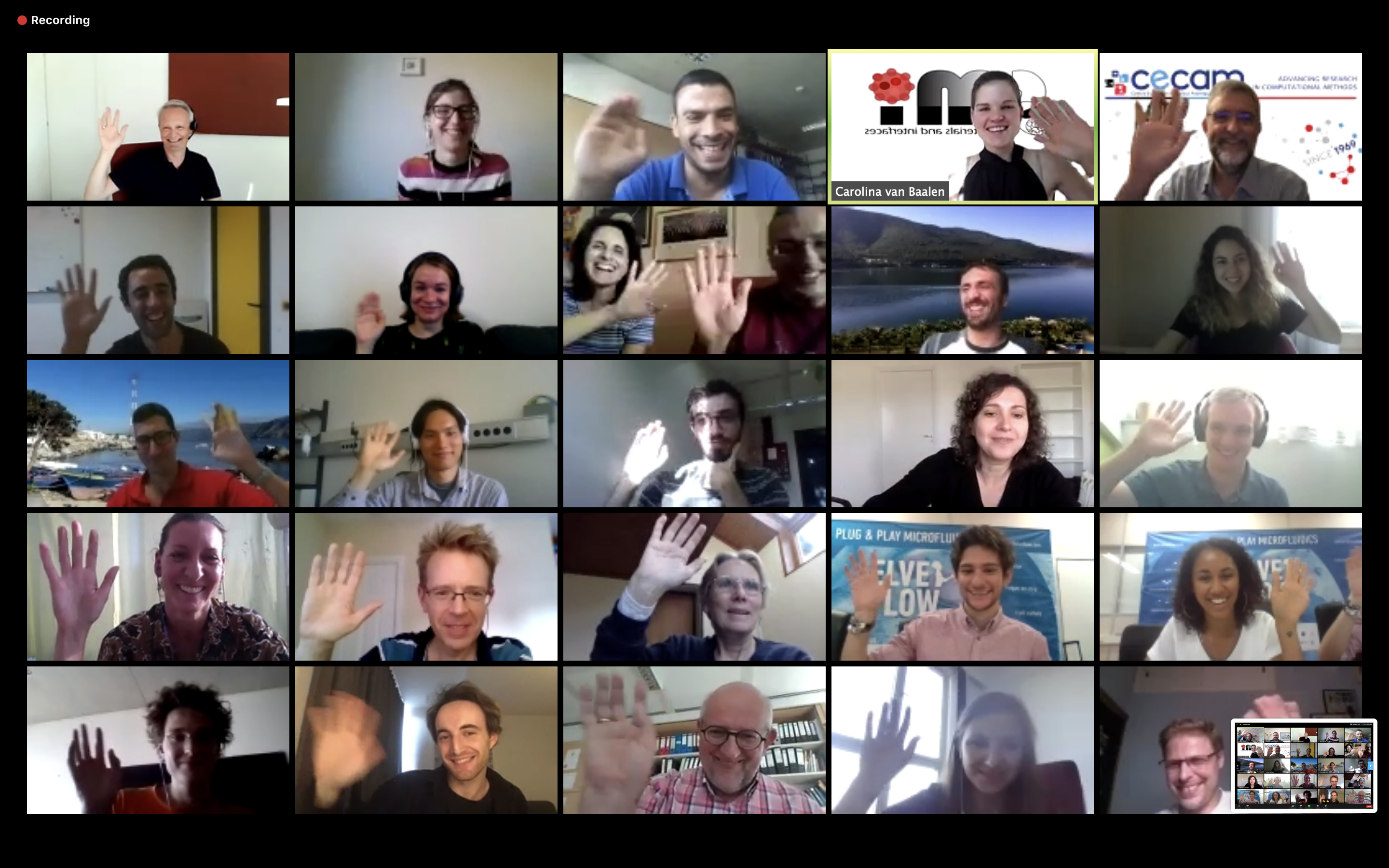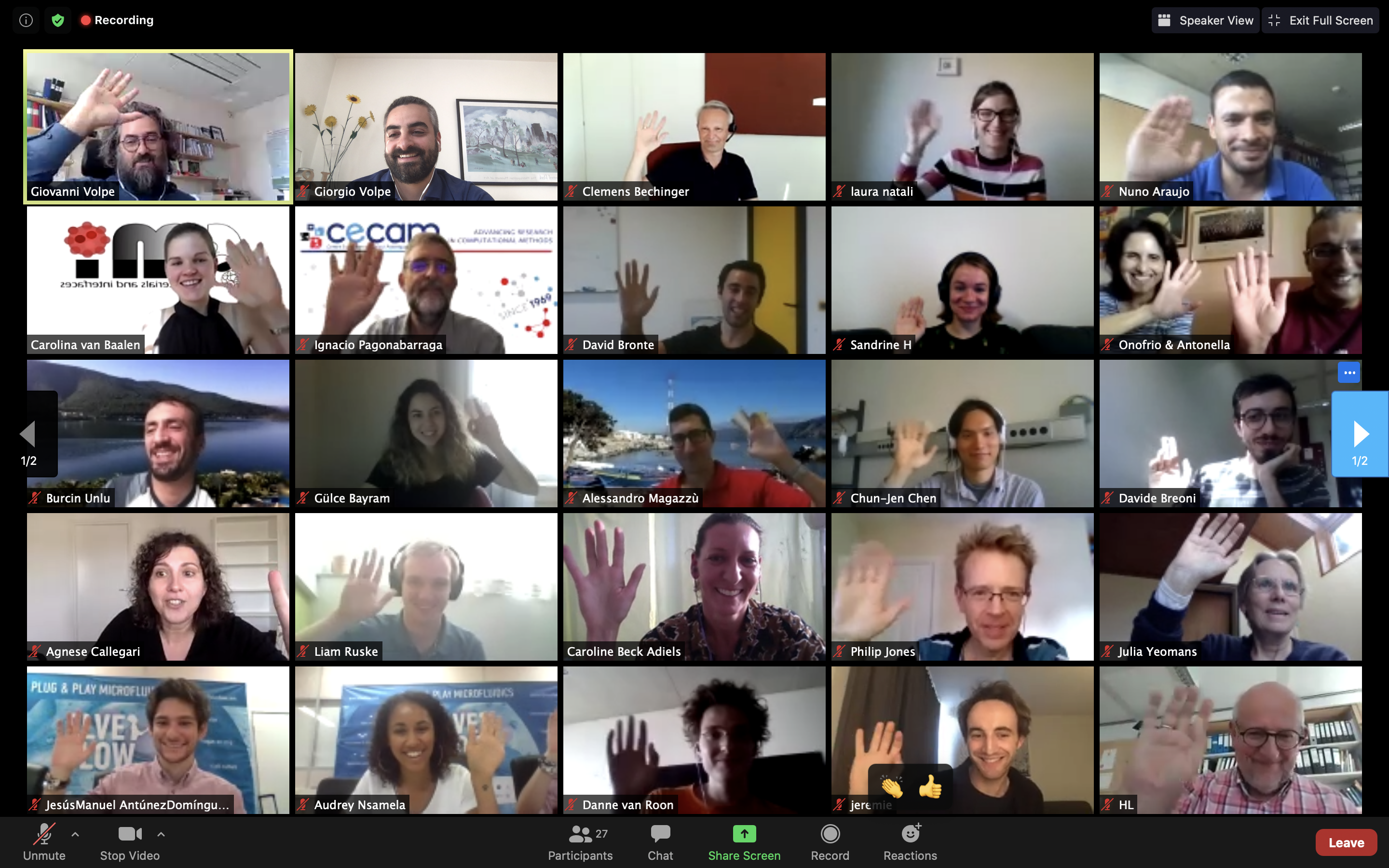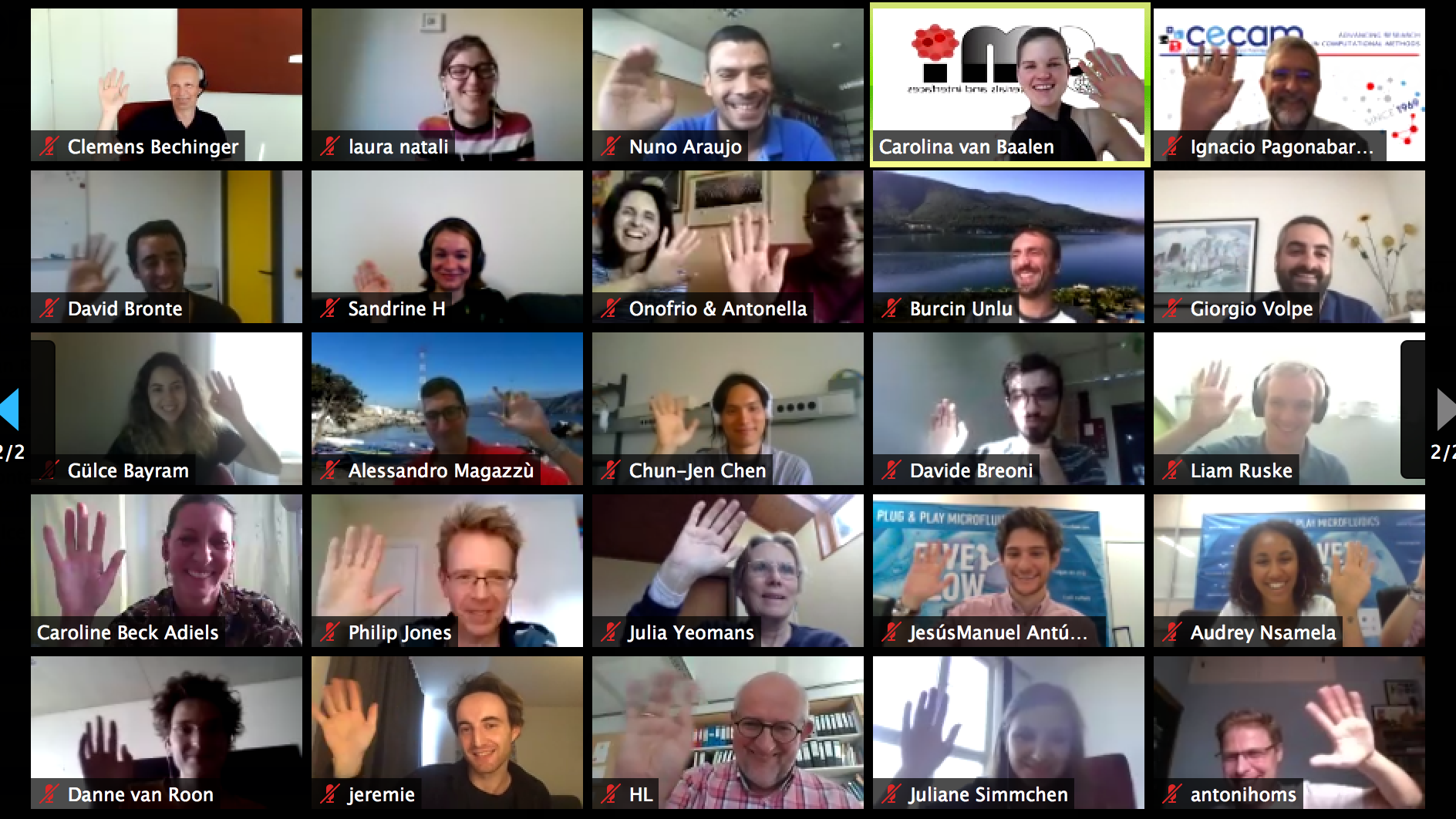
Tag: Sandrine Heijnen
Round Table on the Universality of Active Matter: from Biology to Man-made Models
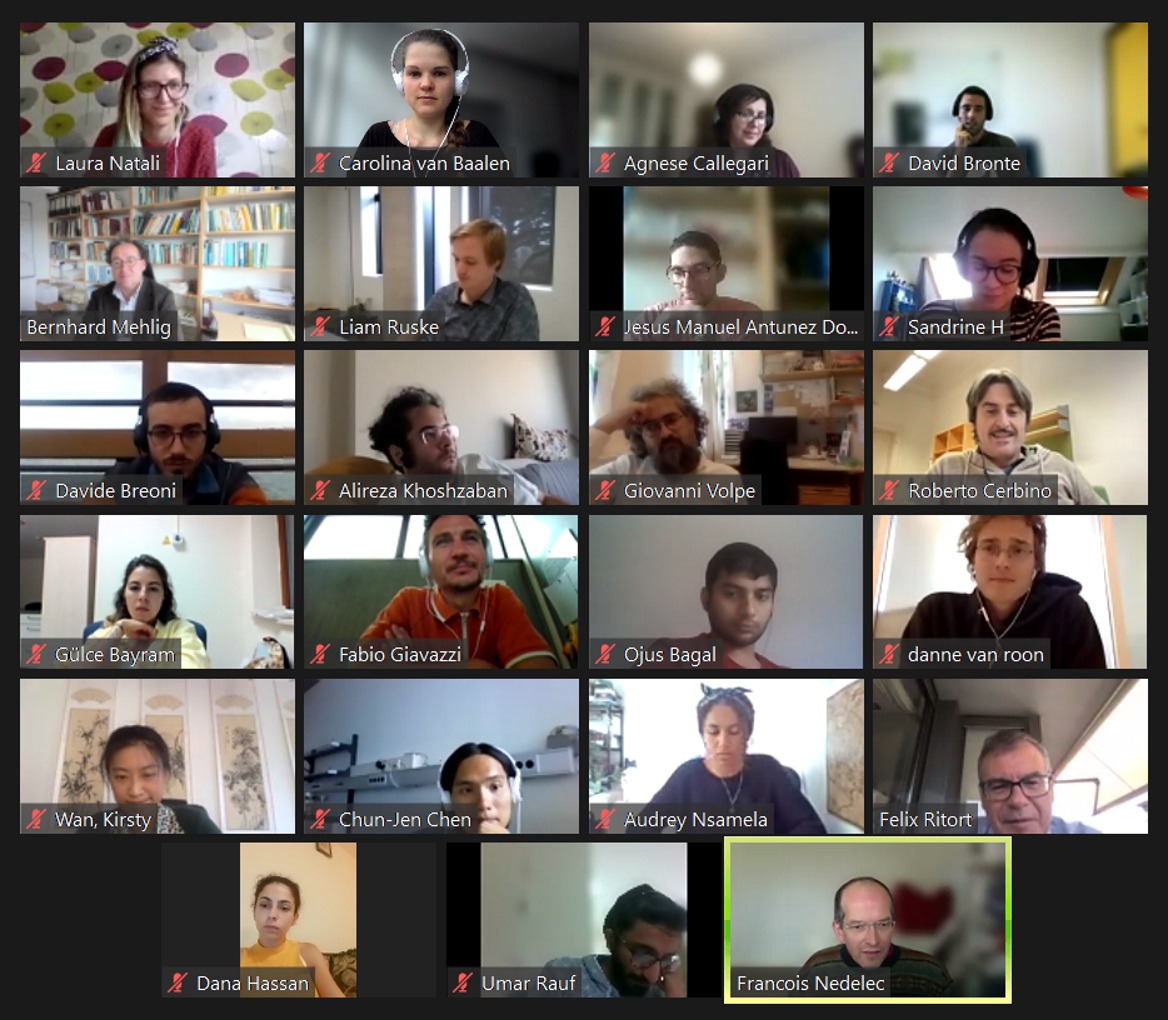
On the 20th of September, the last round table of the Initial Training on Theoretical Methods took place. The discussion was let by the ESRs David, Sandrine, Liam, Carolina, Danne, and Laura. We were excited by the presence of an inspiring panel composed of Felix Ritort, Roberto Cerbino, Kirsty Wan, Fabio Giavazzi, Bernhard Mehlig, and François Nédélec.
The quote “If a system is in equilibrium, it’s probably death” ignited a lively and dynamic discussion around the topic of this final round table: “The universality of active matter: From biology to man-made models.”
Several topics were discussed ranging from active matter length scales and entropy production, to the equipartition theorem and universality. The session left us pondering about the definition of active matter: From single cells to the galaxy, where does the definition of active matter end? Our panelists conclude that it all depend on the question we ask ourselves. The round table was closed with a highlight of the most interesting avenues and opportunities in active matter, including the merge information and activity, realization of in vivo systems, as well as the manipulation of soft matter systems. Some inspiring words from one of the panelists let us realize: “We are the future of active matter.”
Round Table Discussion on Fluids and Active Matter

In our third round table we had the pleasure of Gareth Alexander, Ignacio Pagonabarraga and Julia Yeomans as our guest panellists. This time the overall theme was “Fluids and Active Matter” and hosted by Chun-Jen Chen, Davide Breoni, Danne van Roon, Audrey Nsamela, Dana Hassan and Sandrine Heijnen.
It started out with an interesting discussion regarding the motivation to get in and what amazes them the most in the field of active matter. Here it became clear that active systems can have their passive counterparts, and works for easy transitions from active to passive systems, but at the same time, such active systems still have the potential to answer many fundamental questions. From this topic, one of the key takeaways was that the project that you are currently working on should be the subject that amazes you the most.
The next topic that stood as the centre of the discussion was turbulence. Turbulence is an interesting phenomenon where a lot of things are still unknown. The intriguing concept here was that real, or fluid-dynamical, turbulence is different from active turbulence. As a clarification, Julia Yeomans introduced the following comparison. Real turbulence is observed in a waterfall where the energy follows the Kolmogorov cascade. In active turbulence, the energy originates from the individual particles moving and does not follow the same energy trend as real turbulence.
As one of the final topics, we were wondering what are the main takeaways regarding active nematics, especially if it’s not your field. We got it set for you in four points. One, it is fundamentally unstable and therefore creates flows. Point number two, motile topological effects. Number three, the potential connection it has to biological systems and the ability to explain similar processes. Finally, number four, the fact that we are looking at non-equilibrium systems.
The Active Matter network has a new logo !

 New ActiveMatter logos: color and BW version. (Image by ActiveMatter ESRs)
New ActiveMatter logos: color and BW version. (Image by ActiveMatter ESRs)
Rond Table Discussion on: Advanced Control of Active Matter
The last round table of this workshop regarded the topic advanced control of active matter. As organizers of round table, Audrey Nsamela, Chun-Jen Chen, Sandrine Heijnen, Harshith Bachimanchi and Alireza Khoshzaban, we welcomed and introduced our esteemed guests, namely Jérémie Palacci from University of San Diego, Clemens Bechinger from Konstanz University, Frank Cichos from Leipzig University, and Lucio Isa from ETH Zurich.
The round table started out with a clarification on advanced control of active matter. Active matter can be controlled by numerous external stimuli but implementing control on individual particles or artificial entities is what qualifies as advanced control. Currently, the control of active matter is still far from the behavior and control micro-organisms have on that scale; hence a big challenge lies there for us. Jérémie Palacci introduced an interesting research topic where they found a way to regulate the swimming process of E. Coli by light illumination. Here genetic modification was used to control the proton pump involved in the energy transportation process.
Advanced control of active matter can be applied to model systems where the control is lacking, for example biological systems. In a biological system the control over an organism is limited to the external stimuli that are applied and won’t always result in the same reaction. Therefore, using active particles showing predictable and reproducible behaviors when exposed to a stimulus works perfectly to model and to probe different parameters and thus provide a deeper understanding of the system. The fact advanced control of active matter doesn’t have an application outside of modelling systems is something we shouldn’t be ashamed of.
We concluded the meeting by asking every one of our guests what the promising research directions in the advanced control of active matter are. All of them had a different perspective. Starting with Clemens Bechinger, who was most invested in the further exploration of the applications for model systems. Lucio Isa is mainly looking forward to explore the different materials that we can use to create active material that can subsequently be controlled. Frank Cichos mentioned the importance of looking into new ways to create active particles. So far nature was able to achieve production of active entities with limited waste whereas human production is rather inefficient. Jérémie Palacci pointed out that the current man-made active matter systems are reacting to a strong signal in a well-controlled environment, where nature faces many more factors and still works. It would be interesting to design a system that is resistant to noise.
Round Table Discussion on: Phoretic Propulsion Mechanism
During the second day of the experimental training, we organised the first round table discussion. The session was chaired by six of the students attending the training: Carolina van Baalen, Danne van Roon, Gülce Bayram, Harshith Bachimanchi, Laura Natali and Sandrine Heijnen.
The topic of the round table was phoretic propulsion mechanisms and we had four panelists – Juliane Simmchen, Frank Cichos, Ivo Buttinoni and Felix Ginot – and a guest speaker, Antoni Homs Corbera. After a brief introduction of the panelists, we had a chance to ask all the questions we collected from the other participants.
The discussion started with the definition of the term “phoresis” and continued with the simulation frameworks for phoretic colloids. It included a brief discussion of the complexity involved in these processes and the typical length scales at which interfacial effects are relevant.
The conclusion was “a common joke at conferences is that the phoresis starts when coffee is about to be served”. The real conclusion was that phoretic interaction needs very large gradients on the macroscopic scale and is hidden by diffusion on a very small scale.
All participants had the possibility to jump in and add upcoming questions. We ended the round table by discussing the possible applications of phoretic colloids, highlighting the environmental aspects like microplastics’ filtration in water.
We thank all the guests and participants for making it a successful discussion moment.
Sandrine Heijnen presents her PhD project at the ActiveMatter online meeting, 10 September 2020
During the first official ActiveMatter meeting, on the 10th of September, all Early Stage Researchers got a chance to present their project. During this meeting Sandrine Heijnen, ERS at University College London, introduced herself and her project in a short presentation. Sandrine’s presentation as well as all of the other ESR’s are now published on our Youtube channel.
ActiveMatter PIs+ESRs Online Meeting on 10 September 2020
The ActiveMatter PI+ESRs meeting took place on 10 September 2020. Because of the current travel restrictions and regulations imposed to hinder the spread of the CoViD-19 epidemics, the meeting was held online.
The aim of the meeting was to give an update to all the members on the progress of the ActiveMatter network.
Currently 12 of the 15 Early Stage Researchers (ESRs) have already been recruited and could started their project. During the meeting the ESRs had the opportunity to introduce themselves to the rest of the network and to present their research project.
The presentations of the ESRs have been uploaded on the Youtube channel of the ActiveMatter network and are available online.
Links to the individual presentations:
Liam Ruske, UOXF
Carolina van Baalen, ETH
Audrey Nsamela, ELVESYS
Danne van Roon, FC.ID
Chun-Jen Chen, UKONS
Sandrine Heijnen, UCL
Jesús Manuel Antúnez Dominguez, ELVESYS
David Bronte Ciriza, CNR
Laura Natali, UGOT
Ayten Gülce Bayram, UBIL
Davide Breoni, UDUS
Jérémie Mar Bertrand, EPFL
Pictures
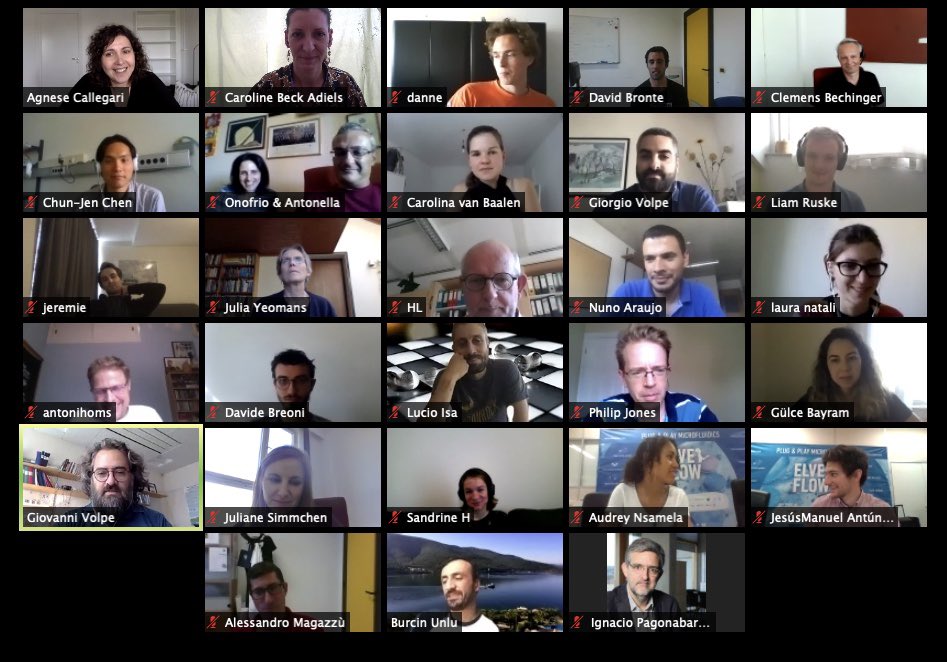 (Screenshot by Caroline Beck Adiels)
(Screenshot by Caroline Beck Adiels)
Sandrine Heijnen joins the ActiveMatter ITN
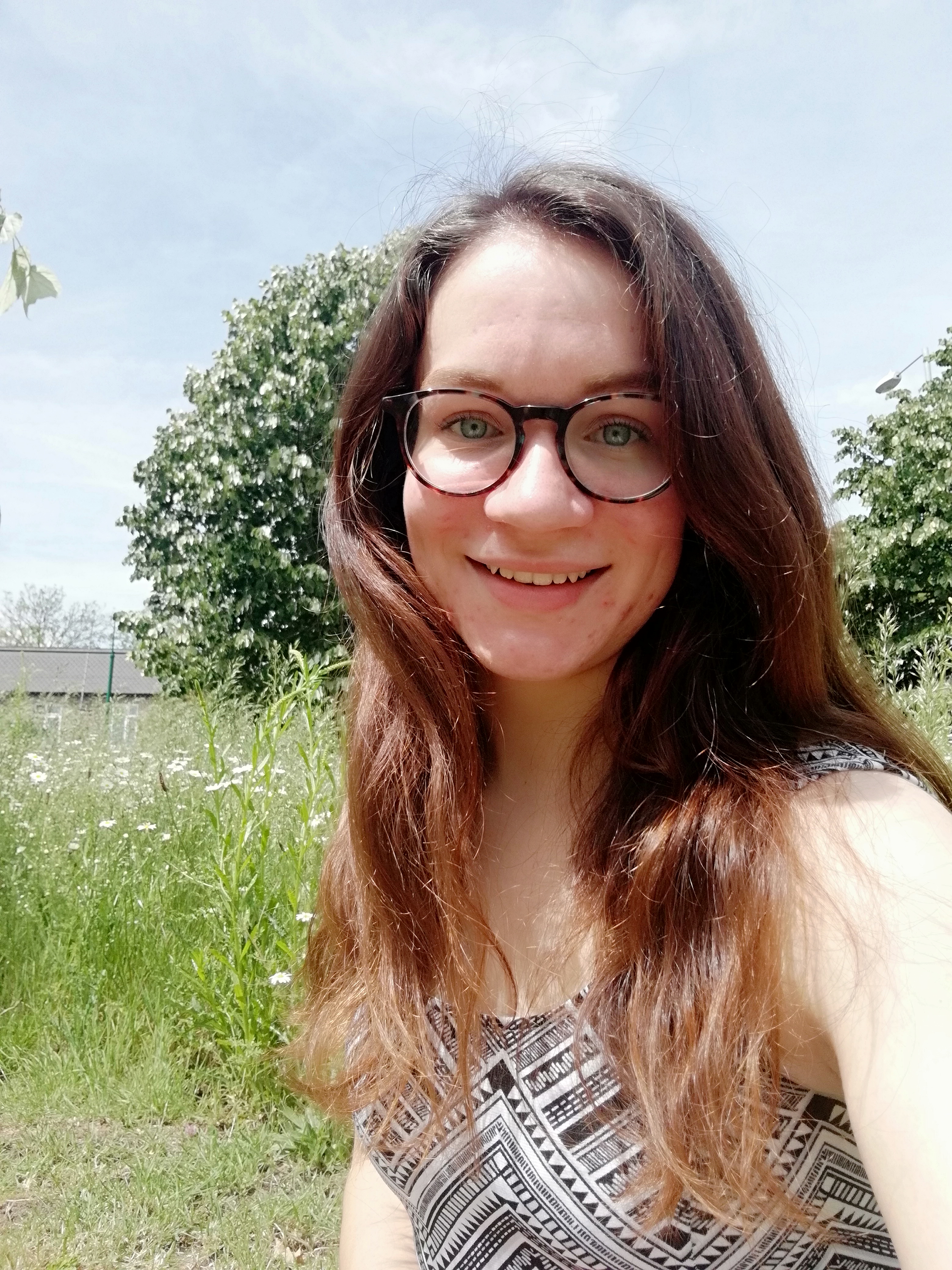 Sandrine Heijnen started her PhD program in Physics at UCL as one of the Early Stage Researchers (ESRs) of the ActiveMatter ITN.
Sandrine Heijnen started her PhD program in Physics at UCL as one of the Early Stage Researchers (ESRs) of the ActiveMatter ITN.
Her work focuses on controlling and predicting the collective behaviour of active particles while being influenced by external stimuli.
She will conduct her research under the supervision of Prof. Giorgio Volpe and Prof. Phil Jones.


